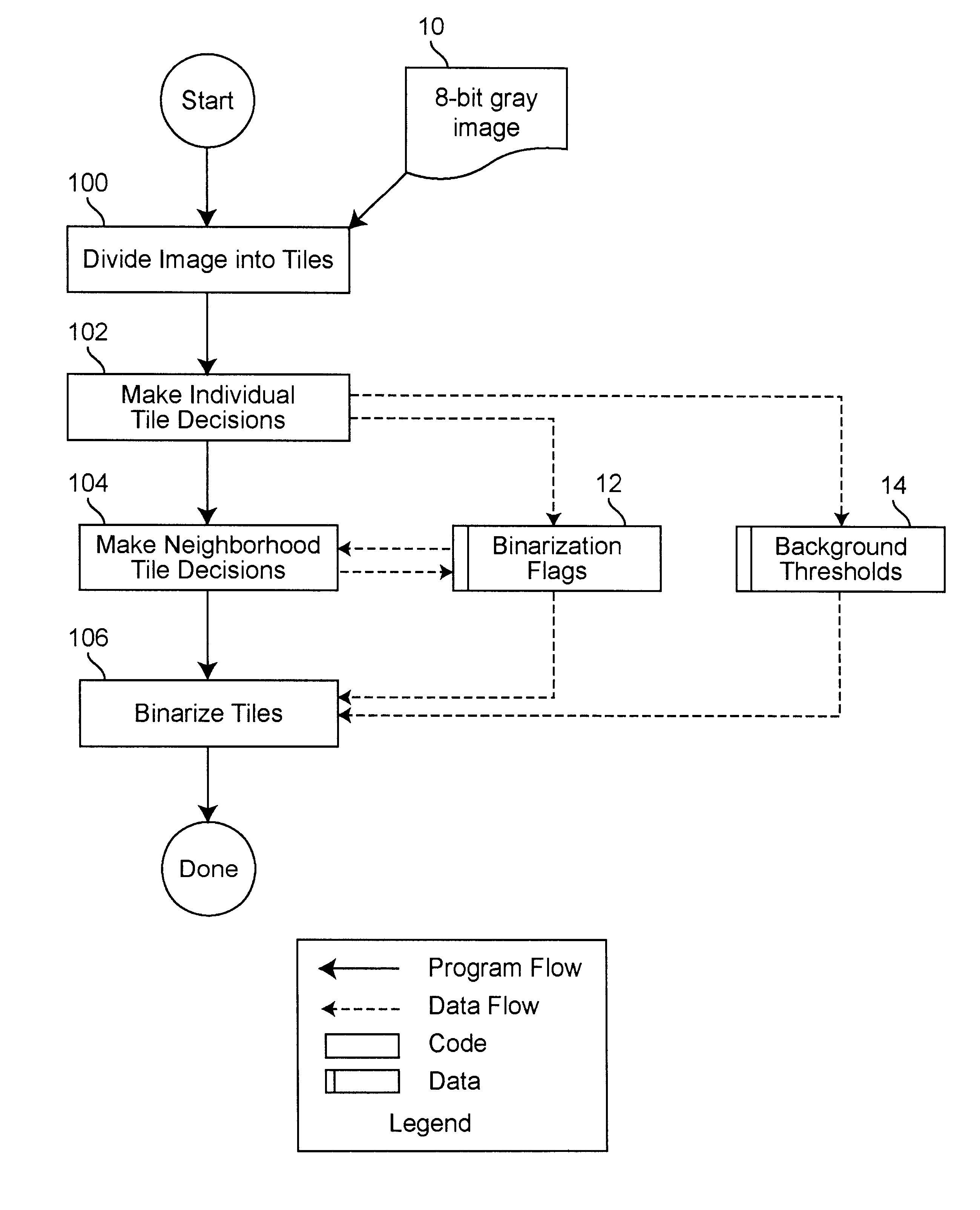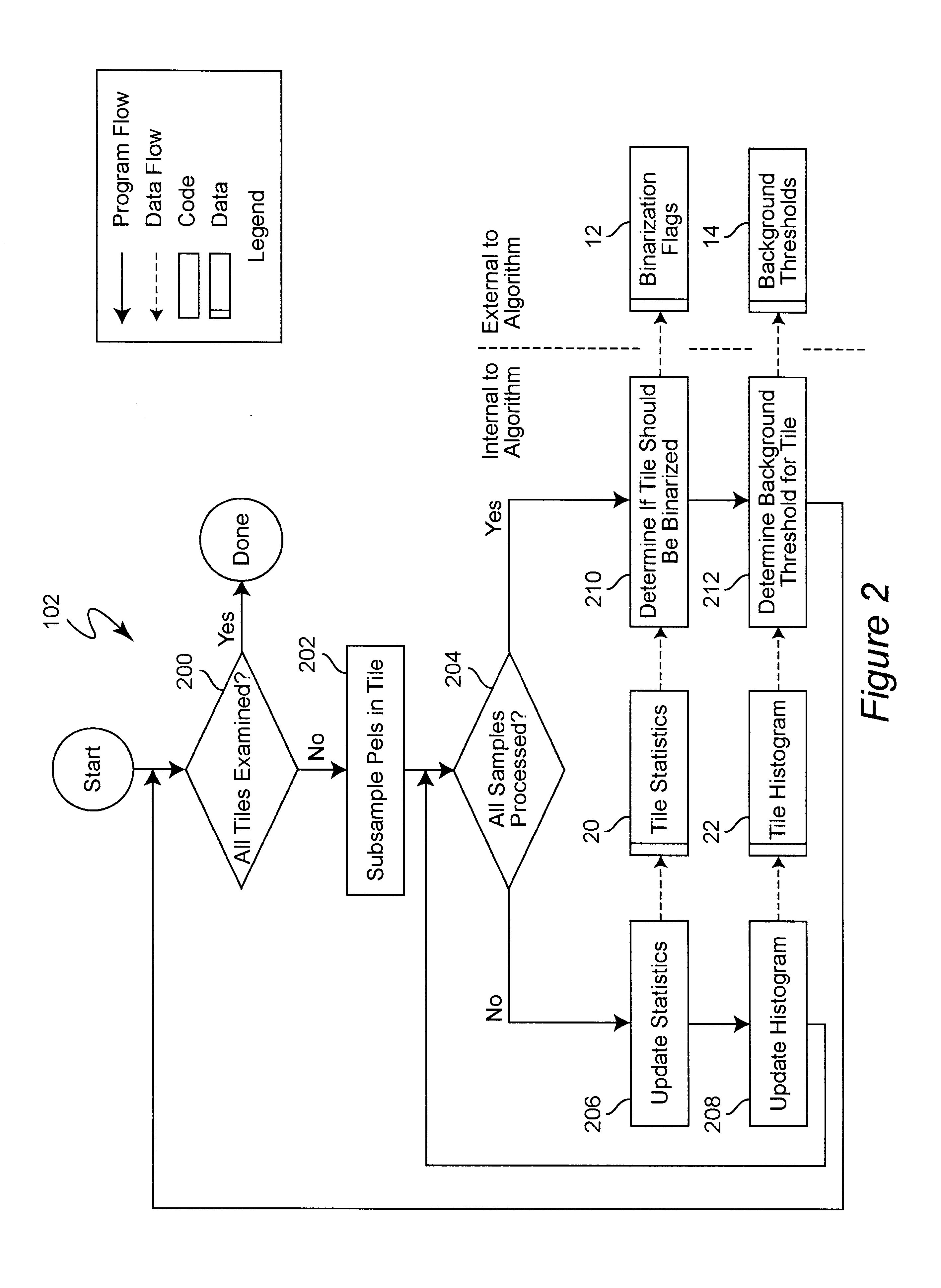Real time binarization of gray images
a gray image and real-time binarization technology, applied in the field of optical character recognition, can solve the problems of time-consuming comparison of tiles and adjacent pixels, inability to easily modify, and poor method for mail sorting and address recognition
- Summary
- Abstract
- Description
- Claims
- Application Information
AI Technical Summary
Benefits of technology
Problems solved by technology
Method used
Image
Examples
Embodiment Construction
Referring now to the drawings, and more particularly to FIG. 1, there is shown the general method of the preferred embodiment of the present invention. An eight-bit gray image 10 representing a mail piece is received, typically from an OCR camera, and used as input to the present method. An example gray image of a mail piece is shown in FIG. 7. One should note that although there is a definite contrast between the foreground (lettering) and background, there is no definite black to white demarcation. The image 10 is divided into tiles in process block 100. The tiles are small, to provide detailed processing of the image and large enough so that the necessary information can be derived from each tile. In a preferred form, the tiles are each 16 pixels.times.16 pixels. An example of the mail piece of FIG. 7 is shown with its 16.times.16 pixel tile boundaries in FIG. 8. Next, individual tile decisions are made in process block 102 to produce binarization flags 12 and background threshol...
PUM
 Login to View More
Login to View More Abstract
Description
Claims
Application Information
 Login to View More
Login to View More - R&D
- Intellectual Property
- Life Sciences
- Materials
- Tech Scout
- Unparalleled Data Quality
- Higher Quality Content
- 60% Fewer Hallucinations
Browse by: Latest US Patents, China's latest patents, Technical Efficacy Thesaurus, Application Domain, Technology Topic, Popular Technical Reports.
© 2025 PatSnap. All rights reserved.Legal|Privacy policy|Modern Slavery Act Transparency Statement|Sitemap|About US| Contact US: help@patsnap.com



